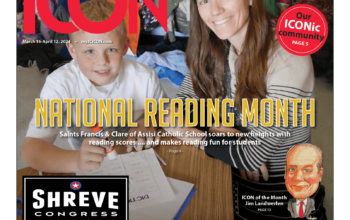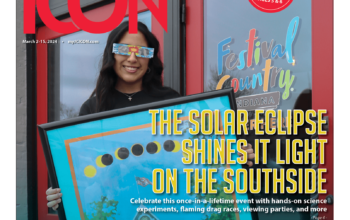By Nancy Price
A trio of Center Grove High School students has created a unique idea to help the homeless and low-income residents stay warm during the winter.
Mahek Agrawal, Madison Hammill and Athulya Nair, seniors in Andrea Teevan’s Project Lead the Way biomedical science class, used STEM (science, technology, engineering and math) skills to complete their project, which won state in a nationwide competition, Samsung’s 10th annual Solve for Tomorrow contest. The competition is open to students in sixth through 12th grade, using STEM skills to solve a challenge in the community.
More than 2,000 entries nationwide were submitted. One hundred of them were chosen as state winners.

Agrawal, Hammill and Nair combined their different STEM strengths to produce a design for a low-cost material that releases heat and enhances heat retention. The material can be used in blankets or as insulation for mobile homes.
“I didn’t realize how good the idea was until we were progressing through the stages of the project,” said Agrawal. “It’s definitely really cool and we feel competent in our next steps.”
“It feels crazy to think we’re so young but we’re already innovating something that’s not been done before,” Hammill added.

“They really just took a product that may exist in another world and applied it to the scenario (of the project),” Teevan said. “I think it’s inspiring to have 17- and 18-year-old kids benefit the community,” “The kids are so elegant with their words, they are top-notch students and they can express the mission well, which aided them in the competition.”
What is Project Lead the Way?
Project Lead the Way (PLTW) is a nonprofit organization that develops STEM curricula for students in elementary, middle and high schools. PLTW creates hands-on learning experiences for students of all levels. PLTW biomedical science students operate with the same tools used by professionals in hospitals and labs while working together to find solutions to problems.
By the time students reach their senior year, “they innovate new ideas and use their presentation and professionalism skills,” even completing an eight-week internship, Teevan said.

Despite many STEM careers traditionally dominated by men, including engineering, computer science, architecture and actuarial science, the biomedical side tends to attract more females then men, according to Teevan. “For every class of 24 students, only six or seven are males; the rest are females,” she said.
Agrawal, Hammill and Nair remember being exposed to STEM at an early age and dreaming of careers where they could use those skills.
“When I was little, I watched medical TV shows all the time,” Nair said, recalling Doc McStuffins, an animated TV children’s series that premiered in 2012 about a young girl who aspires to be a doctor like her mother and communicates with and heals broken toys and stuffed animals.

Impacting future generations
Now the students are hoping their ideas can help motivate younger girls. “It would be really cool to help other generations, if they have an interest, to motivate them,” said Nair.
They also plan to study STEM in college next year and agreed that their experience with Project Lead the Way classes have helped give them the confidence and insight into exploring careers they may not have otherwise considered.
Nair, who plans to pursue a science-related major at Purdue University, said she has learned a lot, through research, applying skills and how innovations can impact a community. “It’s given me more insight into careers other than medicine,” she said.

Agrawal plans to study at the Kelley School of Business at Indiana University. “This project helped reinforce what I want to do and like to do, and I’ll have more confidence as I get through and out of college.”
“I plan to study biomedical engineering at the University of Wisconsin,” Hammill said. “This project has given me a look into more fields that are engineering and technology-focused. The field is so wide in opportunities.”
Samsung’s Solve for Tomorrow competition: what’s next?
As a state winner, CGHS received a $15,000 prize package, a video kit and a Samsung tablet. Samsung will announce 20 national finalists in March. Selected schools will receive a $50,000 prize package and a chance to present their prototypes to a panel of judges in April. Judges will select five national winners who will receive $100,000 in technology and classroom materials and earn a trip to Washington, DC to present their projects to members of Congress. For more information, go to Samsung.com/us/solvefortomorrow.

